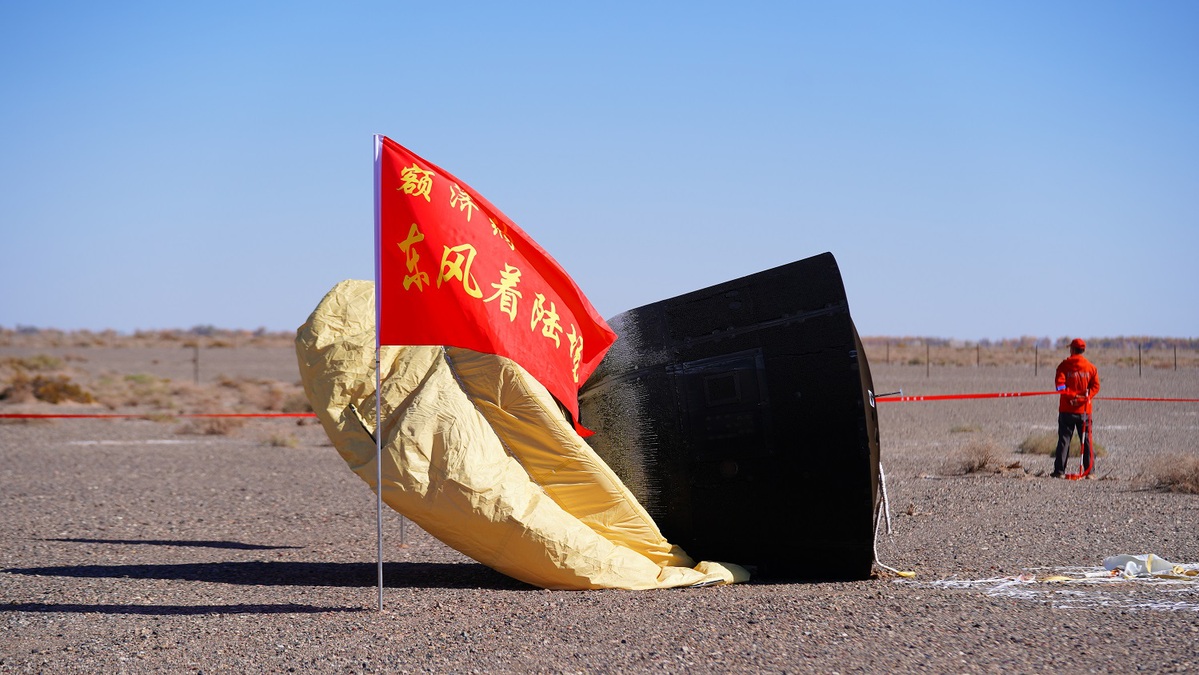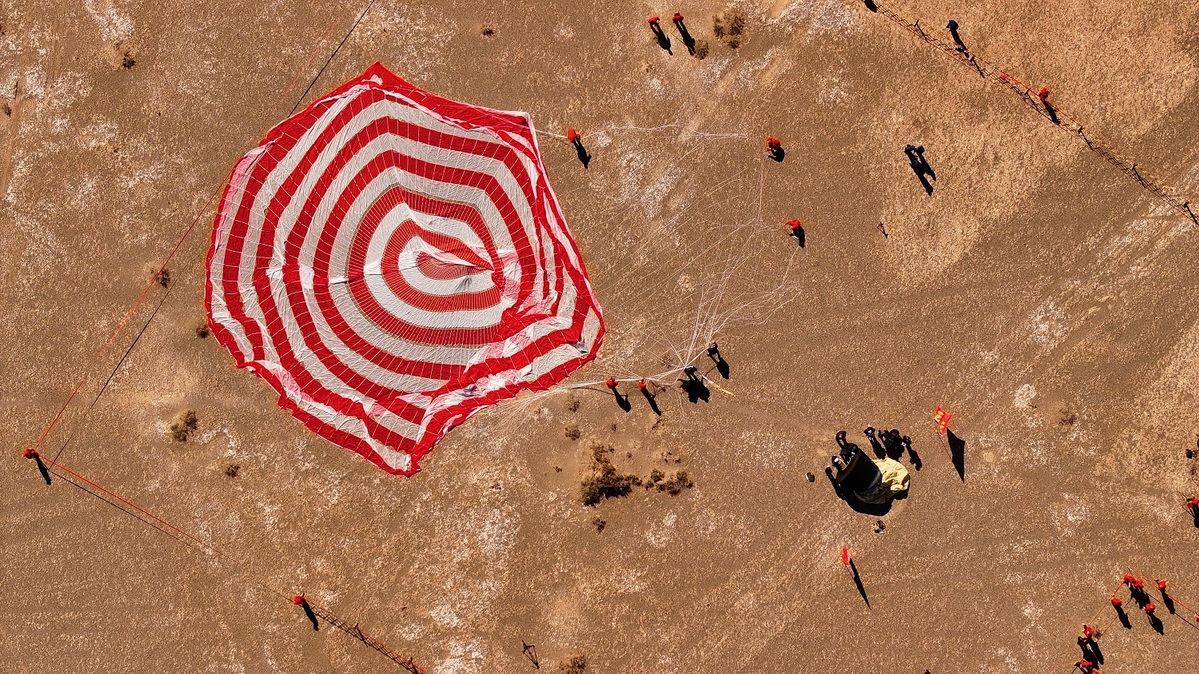China's first reusable satellite returns to Earth with payloads


China's first reusable satellite returned to Earth on Friday morning and has been recovered at its predetermined landing site in the Inner Mongolia autonomous region, according to the China National Space Administration.
The administration said in a news release that the Shijian 19 satellite touched down on the Dongfeng Landing Site at 10:39 am and was then opened by ground recovery personnel sent by the Jiuquan Satellite Launch Center to take out mission payloads.
There were plant seeds, microorganism samples, technology demonstration devices, space experimental instruments as well as cultural items placed inside the satellite. Moreover, the Shijian 19 carried science payloads from five nations, including Thailand and Pakistan, according to the administration.
The spacecraft was placed into space by a Long March 2D carrier rocket that lifted off from the Jiuquan spaceport on Sept 27.

Developed by the China Academy of Space Technology in Beijing, Shijian 19 was tasked with servicing space-based mutation breeding programs and carrying out flight tests for the research of domestically developed materials and electronic components.
According to the release, the satellite features a high level of microgravity inside its body and a large carrying capacity. It is a good platform for high-microgravity experiments and its service will facilitate studies in microgravity physics and life science.
China launched its first recoverable satellite in 1975, becoming the third nation, after the United States and former Soviet Union, to have such spacecraft. The country has lifted nearly 30 such spacecraft since then. These satellites have enabled Chinese scientists to carry out hundreds of space-based tests and experiments. However, all of them would not be reused, meaning they would retire as soon as their payloads are taken out.
The microgravity inside spacecraft has proved to be beneficial to many scientific experiments and recoverable satellites are the most suitable carrier for such experiments.


















